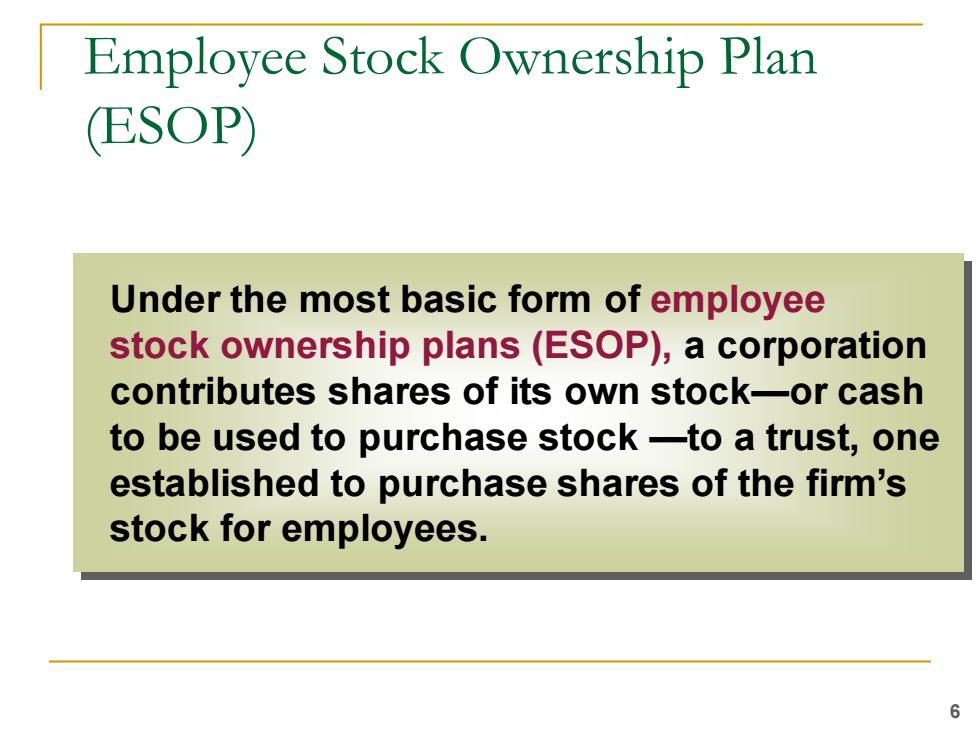
Chapter 12 Pay-For-Performance and Financial Incentives
◼ Chapter 12 ◼ Pay-For-Performance and Financial Incentives

Behavioral Objectives When you finish studying this chapter,you should be able to: Discuss how to use piecework,standard hour,and team or group incentive plans. Discuss how to use short-term and long-term incentives for managers and executives. List the pros and cons of salary plans and commission plans for salespeople. Explain how an incentive plan might backfire and how to avoid such a problem
Behavioral Objectives Discuss how to use piecework, standard hour, and team or group incentive plans. Discuss how to use short-term and long-term incentives for managers and executives. List the pros and cons of salary plans and commission plans for salespeople. Explain how an incentive plan might backfire and how to avoid such a problem. When you finish studying this chapter, you should be able to: 1

Incentives for Operations Employees Piecework Plans Standard Hour Plan Team or Group Variable Pay Incentive Plans 2
Incentives for Operations Employees Piecework Plans Standard Hour Plan Team or Group Variable Pay Incentive Plans 2

Incentives for Managers and Executives Short-Term Incentives: the annual bonus Long-Term Incentives: capital accumulation programs 3
Incentives for Managers and Executives Short-Term Incentives: the annual bonus Long-Term Incentives: capital accumulation programs 3

Defining the Strategic Context for the Executive Compensation Plan Define the strategic context for the executive compensation program, including the internal and external issues that lace the company and its business objectives-boosting sales abroad,downsizing,and so on. Based on your strategic aims,shape each component of the executive compensation package(base salary,short-term incentives,long-term incentives,and benefits and perquisites),and then group the components into a balanced whole. Create a stock option plan to give the executive compensation package the special character it needs to meet the unique needs of the executives and the company. Check the executive compensation plan for compliance with all legal and regulatory requirements and for tax effectiveness. Install a process for reviewing and evaluating the executive compensation plan whenever a major business change occurs. 4
Defining the Strategic Context for the Executive Compensation Plan Define the strategic context for the executive compensation program, including the internal and external issues that lace the company and its business objectives—boosting sales abroad, downsizing, and so on. Based on your strategic aims, shape each component of the executive compensation package (base salary, short-term incentives, long-term incentives, and benefits and perquisites), and then group the components into a balanced whole. Create a stock option plan to give the executive compensation package the special character it needs to meet the unique needs of the executives and the company. Check the executive compensation plan for compliance with all legal and regulatory requirements and for tax effectiveness. Install a process for reviewing and evaluating the executive compensation plan whenever a major business change occurs. 4

Incentives for Salespeople Salary Plan Commission Plan Combination Plan 5
Incentives for Salespeople Salary Plan Commission Plan Combination Plan 5

Employee Stock Ownership Plan ESOP) Under the most basic form of employee stock ownership plans (ESOP),a corporation contributes shares of its own stock-or cash to be used to purchase stock-to a trust,one established to purchase shares of the firm's stock for employees. 6
Employee Stock Ownership Plan (ESOP) Under the most basic form of employee stock ownership plans (ESOP), a corporation contributes shares of its own stock—or cash to be used to purchase stock —to a trust, one established to purchase shares of the firm’s stock for employees. 6

Why Incentive Plans Don't Work Performance pay can't replace good management. You get what you pay for. Pay is not a motivator. Rewards punish. Rewards rupture relationships. Rewards can unduly restrict performance. Rewards may undermine responsiveness. Rewards undermine intrinsic motivation
Why Incentive Plans Don’t Work Performance pay can’t replace good management. You get what you pay for. Pay is not a motivator. Rewards punish. Rewards rupture relationships. Rewards can unduly restrict performance. Rewards may undermine responsiveness. Rewards undermine intrinsic motivation. 7

When to Use Incentives 1.When employees are unable to control quantity or output (such as on machine-paced assembly lines),pay based on time may be more appropriate. 2.When delays in the work are frequent and beyond employees'control,it is im practical to tie workers'pay to their output. 3.Most incentive plans tie pay to the quantity,rather than the quality,of output.When quality is a primary consideration, pay based on time is often(but not always)more appropriate
When to Use Incentives When employees are unable to control quantity or output (such as on machine-paced assembly lines), pay based on time may be more appropriate. When delays in the work are frequent and beyond employees’ control, it is impractical to tie workers’ pay to their output. Most incentive plans tie pay to the quantity, rather than the quality, of output. When quality is a primary consideration, pay based on time is often (but not always) more appropriate. 1. 2. 3. 8

How to Implement Incentive Plans 1.Link the incentive with your strategy. 2.Ensure that effort and rewards are directly related. 3.Make the plan understandable and easily calculable by the employees. 4.Set effective standards. 5.Guarantee your standards. 6.Guarantee an hourly base rate. 7.Get support for the plan. 8.Have good measurement systems. 9.Emphasize long-term as well as short-term success. 10.Take the corporate culture into consideration
How to Implement Incentive Plans 1. Link the incentive with your strategy. 2. Ensure that effort and rewards are directly related. 3. Make the plan understandable and easily calculable by the employees. 4. Set effective standards. 5. Guarantee your standards. 6. Guarantee an hourly base rate. 7. Get support for the plan. 8. Have good measurement systems. 9. Emphasize long-term as well as short-term success. 10. Take the corporate culture into consideration. 9